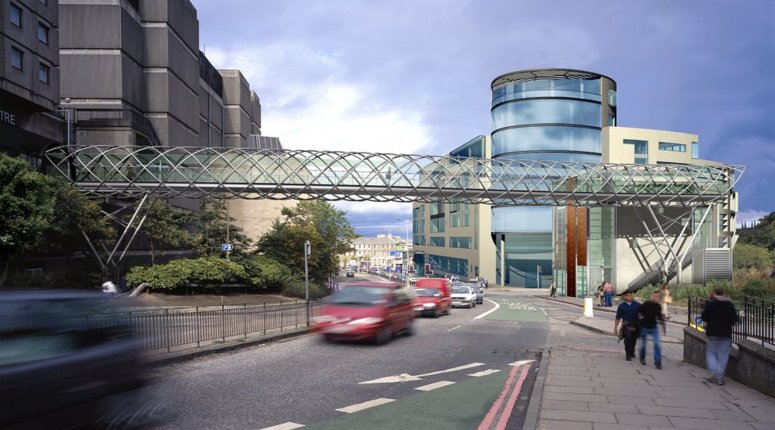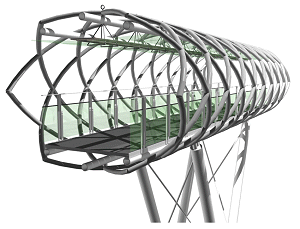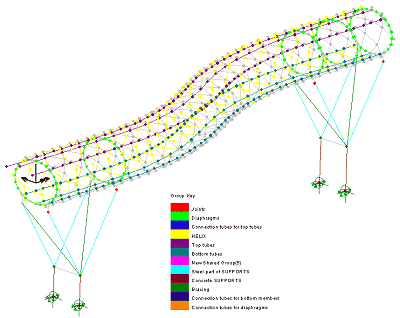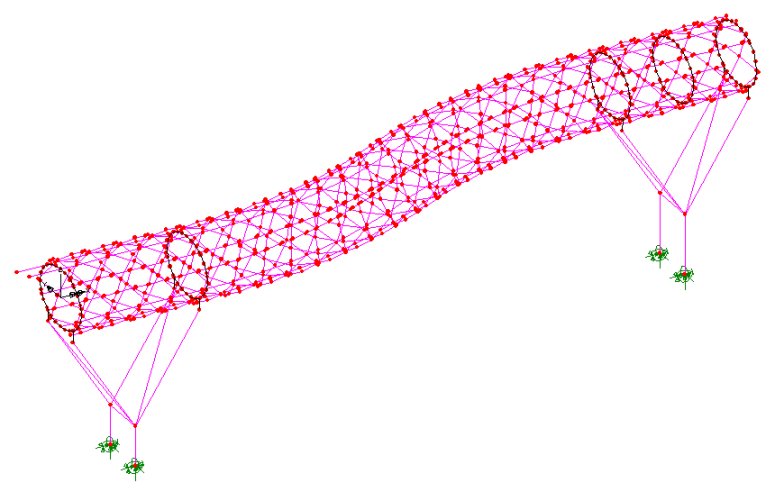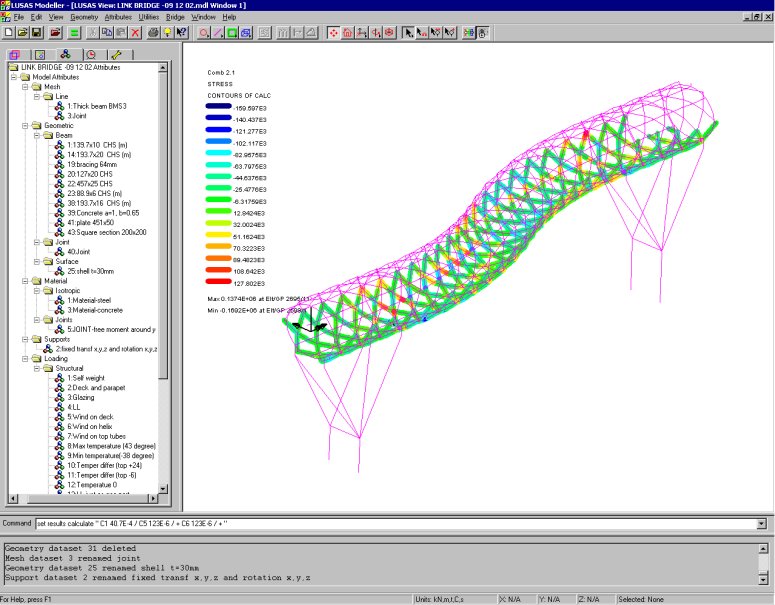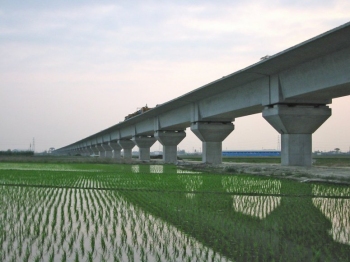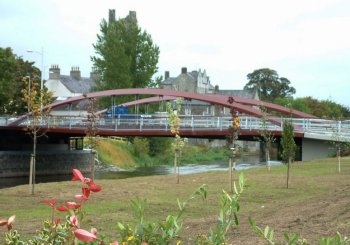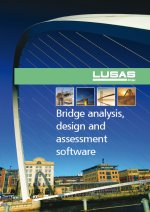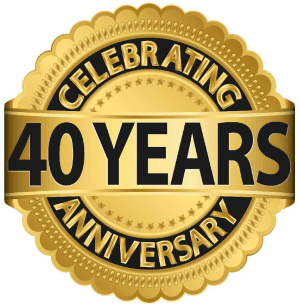Analysis and results A static analysis of the proposed structure clearly showed that the bottom members of the helix immediately above the inclined supports were overstressed and some form of modification or stiffening would be required for the final structure. Iva Trifkovich, structural engineer at Buro Happold explains: "The helical structure, which provides shear transfer between the top and bottom chords, was globally very stiff - the only problem we had was locally around the supports. We considered different strengthening strategies, including a steel plated stiffening option, but this didn’t solve the problem." In the end 193.7 x 20 CHS diaphragm rings were used at each support location. Subsequent analysis showed that the insertion of these rings lowered the stresses in the helix local to the supports to an acceptable level. Iva Trifkovich said: "Because of the complex nature of the structure and its S-shaped form, it would not have been possible for us to be sure of the exact stresses and forces in the helical members without the use of LUSAS."
A nonlinear buckling analysis was carried out to determine the critical (lambda) factor for when the structure would start to behave nonlinearly. An initial imperfection was applied to the deformed buckling shape and the structure was incrementally loaded. It was shown that the structure remains linear within the range of the design loading. Whilst dynamic response to pedestrian loading can be a problem for some footbridges, a straightforward natural frequency analysis showed that the first horizontal mode shape of 2.55Hz and the first vertical mode shape of 6.32 Hz were both above the critical frequency range for pedestrian comfort according to the UK BD37/01 design code. Gain frequencies were outside of the critical walking range too. Iva Trifkovich explains: "We compared gain frequencies against pacing and jumping frequencies for both vertical and horizontal movement of the bridge and got satisfactory results, showing that pedestrians will not feel any discomfort when crossing the bridge."
"Because of the complex nature of the structure and its S-shaped form, it would not have been possible for us to be sure of the exact stresses and forces in the helical members without the use of LUSAS." Iva Trifkovich, Bridge Engineer, Buro Happold Consulting Engineers Buro Happold wish to acknowledge the contribution made by the following organisations on this project: Client: Coal Pension Properties
(c/o La Salle Investment Management) Share this article
Find out more
Other LUSAS Bridge case studies:
|
|
Software Information
|
||||||||
|
